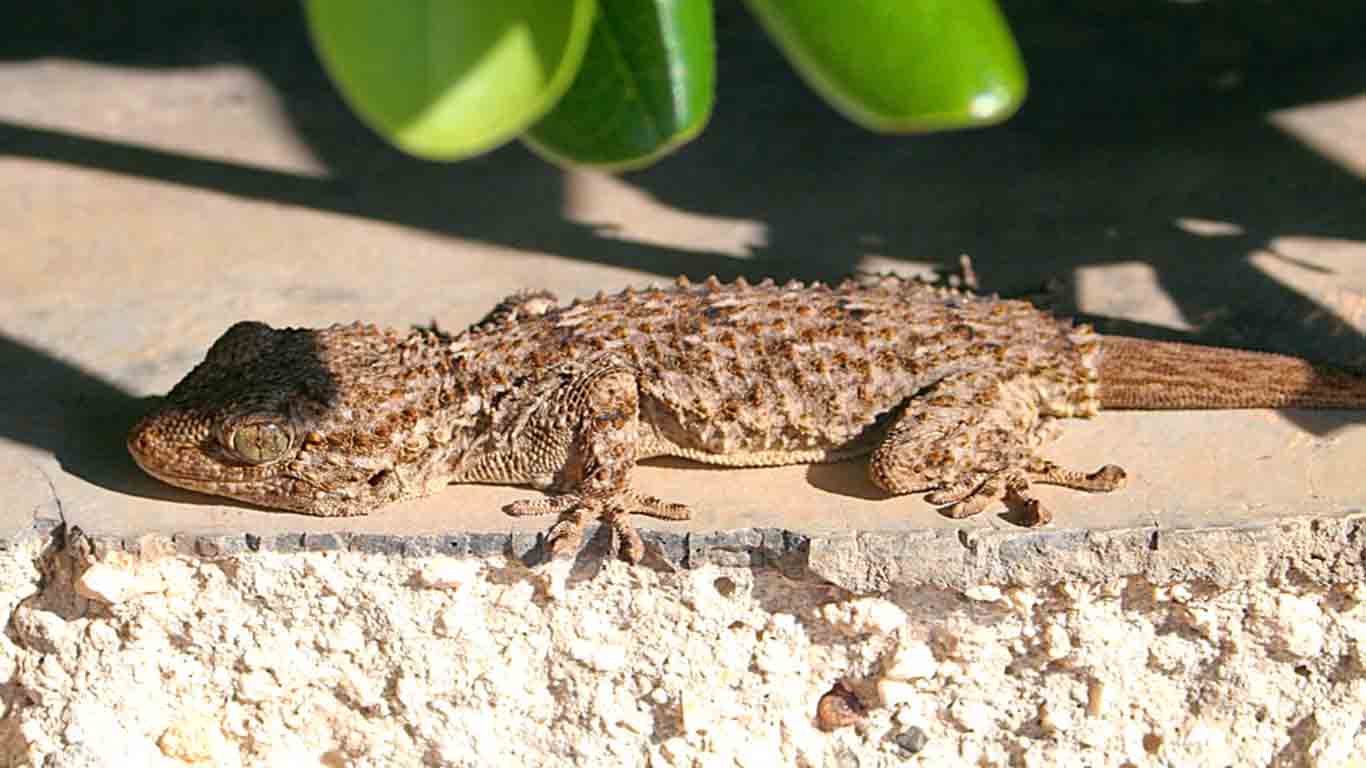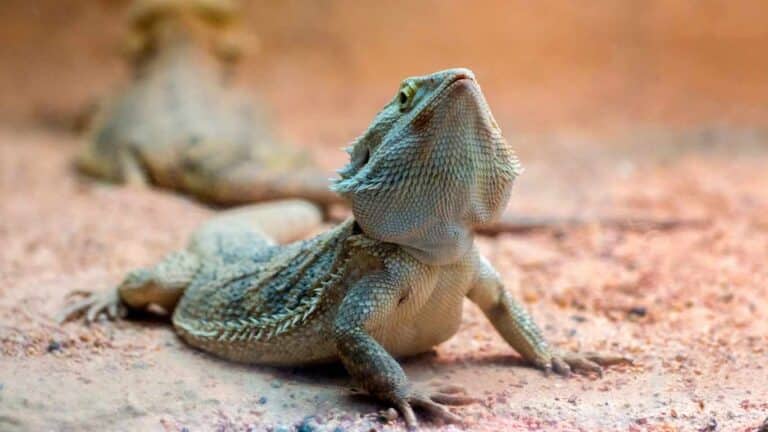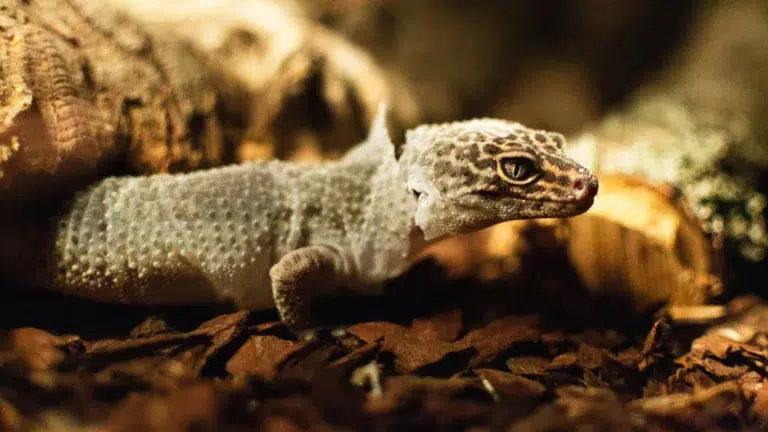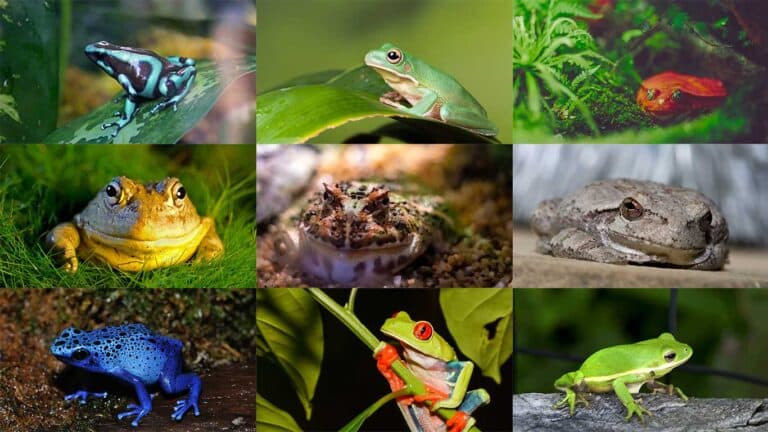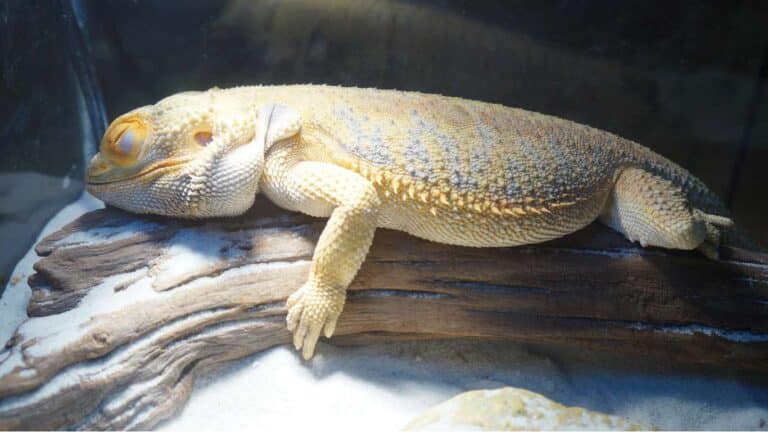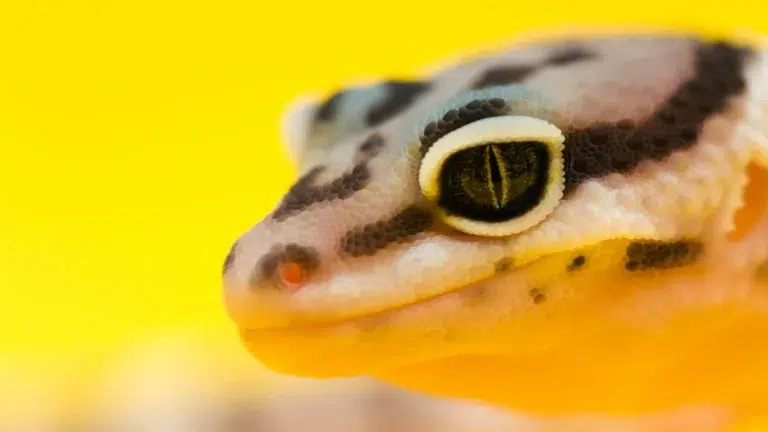Welcome to our guide on crocodile gecko care! If you’re considering bringing home this unique reptile as a pet, you’ve come to the right place. Crocodile geckos, also known as Moorish geckos, are fascinating creatures with their distinctive flat heads and elongated snouts resembling those of crocodiles. These medium-sized geckos are highly adaptable and can make wonderful companions for reptile enthusiasts. In this article, we’ll provide you with valuable insights and tips to ensure the well-being and happiness of your crocodile gecko.
Reptile Revelations:
Crocodile Gecko Habitat
The natural habitat of crocodile geckos is primarily found in the Mediterranean region. They thrive in rocky areas, cliff faces, and shrublands that provide plenty of hiding places. These geckos are commonly found in Southern France, Northern Africa (Morocco, Libya, Egypt, Sahara, Tunisia), Southern Slovenia, the Croatian Coast, the Italian Coast, the Southwest of Greece, and most of the Iberian Peninsula.
(See Table 1 for the distribution of crocodile geckos in their natural habitat)
Outside their natural range, crocodile geckos have established invasive colonies in several countries. These include Spain, Portugal, Uruguay, Argentina, and even the United States. This adaptability to various environments is one of the reasons why crocodile geckos are highly sought after as pets.
| Country | Regions |
|---|---|
| Southern France | Rocky areas, shrublands |
| Northern Africa | Morocco, Libya, Egypt, Sahara, Tunisia |
| Southern Slovenia | Coastal areas |
| Croatian Coast | Rocky areas, cliff faces |
| Italian Coast | Coastal areas, shrublands |
| Southwest of Greece | Rocky areas, shrublands |
| Iberian Peninsula | Most regions |
Table 1: Distribution of crocodile geckos in their natural habitat
Crocodile geckos are highly adaptable and can thrive in various environments, as long as they have access to ample hiding places and a reliable source of food. This adaptability makes them fascinating reptiles that can be enjoyed as pets by reptile enthusiasts around the world.
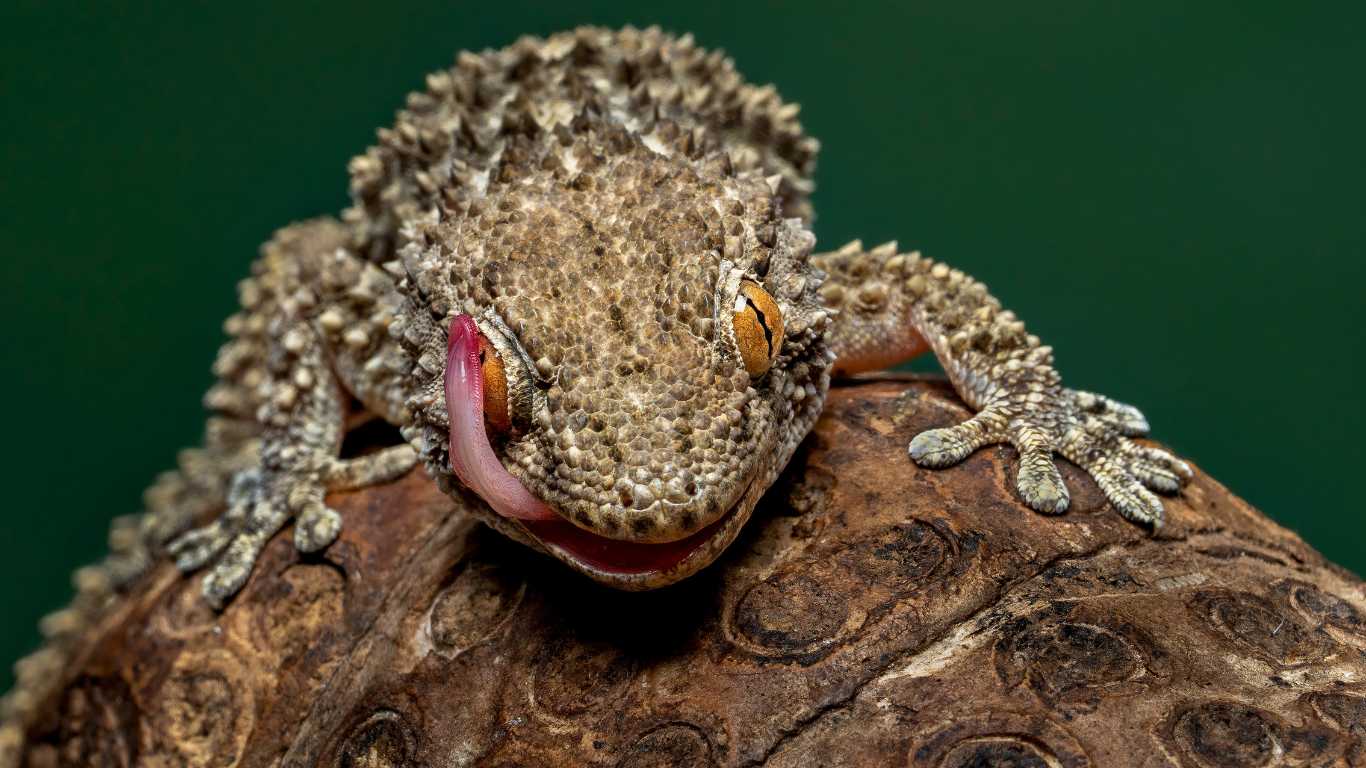
Quotes:
“The rocky areas and shrublands of the Mediterranean region provide the ideal natural habitat for crocodile geckos, ensuring they have plenty of hiding places to retreat to.”
“The adaptability of crocodile geckos to different environments, including invasive colonies outside their natural range, showcases their remarkable resilience as a species.”
Crocodile Gecko Lifespan and Size
Crocodile geckos, known for their unique appearance, have an average lifespan of around 10 years in captivity. However, with proper care, they can live up to 15 years, providing many years of companionship. These geckos have adapted well to their environment and possess exceptional camouflage and hiding abilities, allowing them to survive in the wild for a similar duration.
When it comes to size, crocodile geckos are considered medium-sized compared to other popular pet gecko species. They typically reach lengths of around 5.9 inches, tail included. While they may not be as large as leopard geckos or giant day geckos, their compact size makes them suitable for enclosure in smaller setups without compromising their well-being.

Crocodile Gecko Diet
Proper nutrition is essential for the health and well-being of crocodile geckos. As insectivores, these reptiles have specific dietary requirements that need to be met to ensure their optimal growth and development.
So, what do crocodile geckos eat?
Crocodile geckos primarily feed on a variety of small insects, which make up the majority of their diet. The main food sources for crocodile geckos include:
- Crickets
- Moths
- Beetles
- Mealworms
- Black soldier fly larvae
Offering a diverse range of insects helps provide essential nutrients and prevents nutritional deficiencies. It’s important to vary their diet to mimic their natural feeding habits and ensure they receive a balanced intake of proteins, fats, and vitamins.
When feeding your crocodile gecko, it’s crucial to select appropriate-sized prey items. Food that is too large can pose a choking hazard or cause digestive issues. The size of the food should be no larger than the width of the gecko’s head to ensure it can safely consume it.
Join the Pet Planet Diaries
Sign up for our newsletter to get the latest tips, stories, and exclusive insights into the wonderful world of pets.
“A balanced and varied diet is necessary to meet the nutritional needs of crocodile geckos.”
Here’s an example of a typical crocodile gecko diet:
| Feeding | Frequency |
|---|---|
| Crickets | Every other day |
| Moths | Once a week |
| Beetles | Once a week |
| Mealworms | Occasional treat (2-3 times a month) |
| Black soldier fly larvae | Occasional treat (2-3 times a month) |
Image Caption: A crocodile gecko with a diet consisting of crickets, moths, beetles, mealworms, and black soldier fly larvae.
Remember, the nutritional needs of crocodile geckos may vary slightly depending on their age, size, and overall health. Consulting a reptile veterinarian or an experienced breeder can provide valuable guidance on tailoring the diet to meet your gecko’s specific needs.
Crocodile Gecko Tank Setup
Creating a suitable tank setup for a crocodile gecko is relatively simple. To ensure the ideal habitat for your crocodile gecko, consider the following requirements:

Habitat Requirements
- Humidity: Maintain a humidity level between 40% and 60% in the tank. This can be achieved by misting the enclosure regularly. A hygrometer can help monitor the humidity levels.
- Substrate: Provide a one to two-inch layer of calcium sand or bark bedding as the substrate for the tank. Adding another layer of bedding on top can enhance the natural feel of the enclosure.
- Temperature Gradient: Establish a temperature gradient within the tank by creating a hot side and a cool side. The hot side should have a temperature ranging from 90°F to 95°F, while the cool side should be between 75°F and 80°F.
- Heating and Lighting: Use a basking lamp or ceramic heat emitter to provide heat for the hot side of the tank. A full-spectrum light and a night-specific bulb should be used to mimic the day and night cycle.
- Hiding Places: Ensure that the tank has plenty of hiding places for your crocodile gecko. Place hiding spots on both the warm and cool sides of the tank to provide a sense of security.
- Water Bowl: Include a water bowl in the tank to provide hydration for your crocodile gecko. Ensure that the water is fresh and clean, and regularly clean and refill the bowl.
Setting up the tank according to these guidelines will help create a comfortable and stimulating environment for your crocodile gecko.
| Requirements | Details |
|---|---|
| Humidity | 40% – 60% |
| Substrate | 1-2 inch layer of calcium sand or bark bedding |
| Temperature Gradient | Hot side: 90°F – 95°F / Cool side: 75°F – 80°F |
| Heating and Lighting | Basking lamp or ceramic heat emitter, full-spectrum light, night-specific bulb |
| Hiding Places | Plenty of hiding spots on warm and cool sides |
| Water Bowl | Provide a water bowl for hydration |
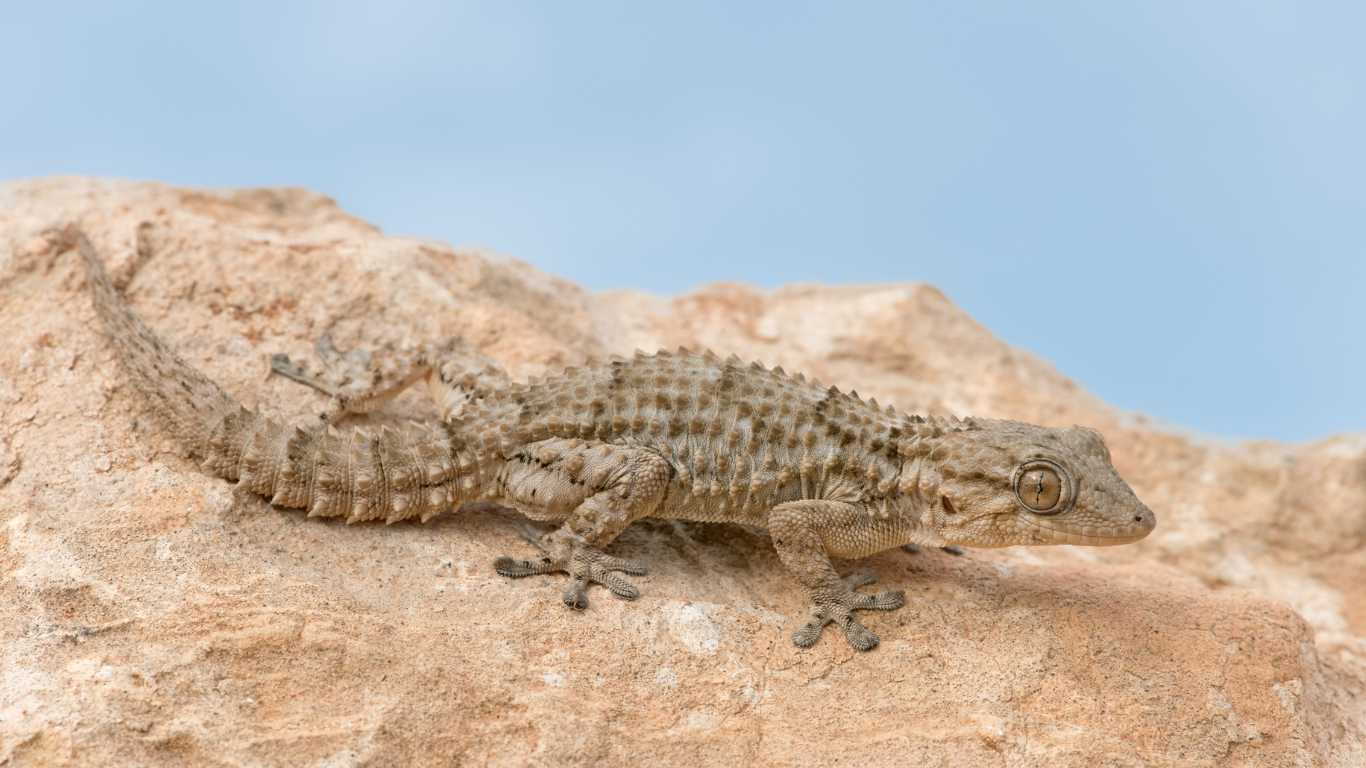
Where to Buy a Crocodile Gecko
If you’re looking to bring a crocodile gecko into your life, there are several options for purchasing one. Reptile expos and conventions, such as Repticon, are fantastic places to find reputable breeders and a wide selection of geckos available for sale. These events provide an opportunity to connect with knowledgeable breeders who can guide you through the process and answer any questions you may have about caring for a crocodile gecko.
If you prefer a more personalized buying experience, you can explore private breeders through reptile forums or online searches. Many experienced breeders maintain a strong online presence, making it easy to find and connect with them. Private breeders often offer a diverse range of crocodile geckos, allowing you to choose the perfect one for your needs.
When purchasing a crocodile gecko, it’s important to avoid buying from pet stores unless they can provide information about the gecko’s origin and ensure that it is captive-bred. This ensures that the gecko is healthy and has been raised in a controlled environment. Buying directly from breeders or reputable sources greatly reduces the risk of bringing home a sick or wild-caught gecko.
Price Range
The price of a crocodile gecko can range from $20 to $50, depending on the breeder and the gecko’s quality. Factors that may influence the price include the gecko’s age, coloration, pattern, and lineage. While some breeders may charge more for rare or unique variations, there are plenty of affordable options available. It’s essential to choose a gecko within your budget and ensure that you’re comfortable with the overall cost of owning and caring for a crocodile gecko.
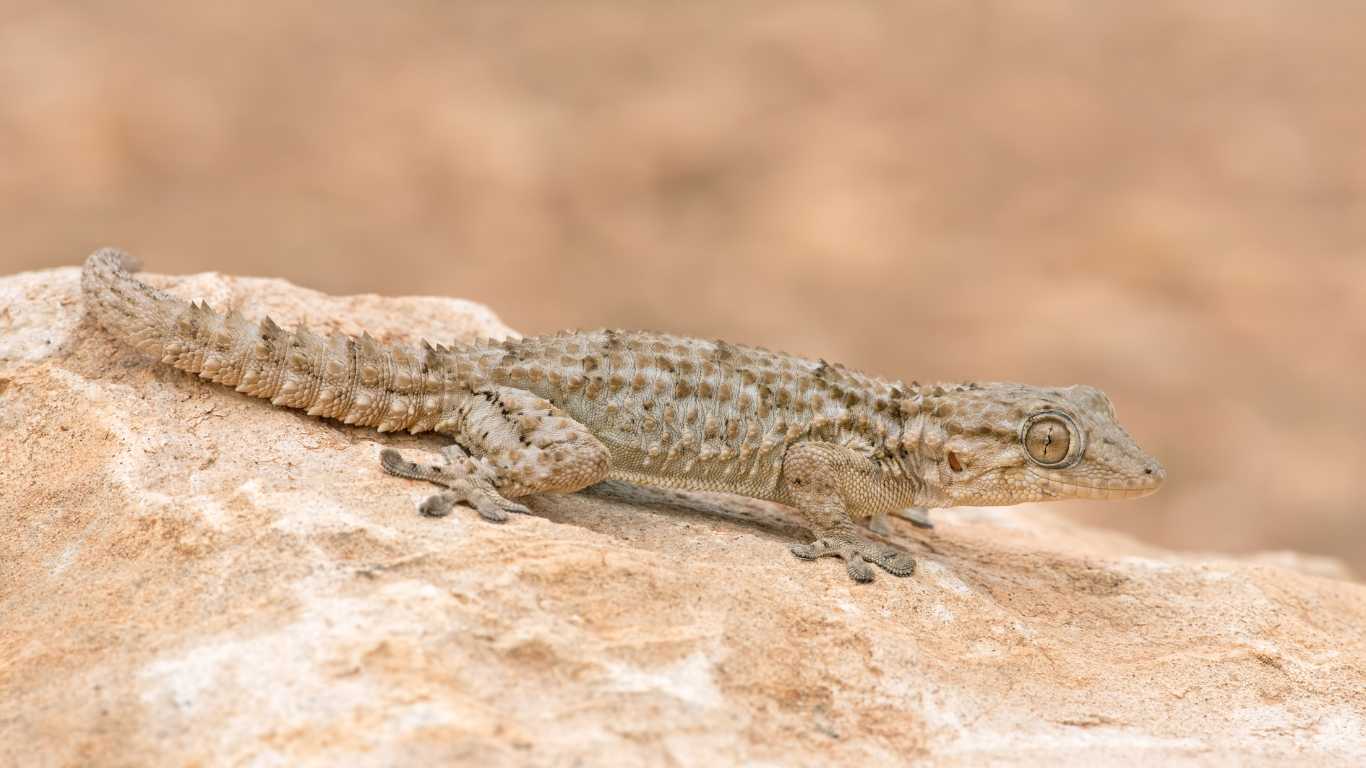
Avoiding Illegal or Unethical Sellers
It’s crucial to be cautious of sellers who operate outside the law or engage in unethical practices. Always research the reputation and credibility of breeders before making a purchase. Look for breeders who prioritize the well-being of their geckos and demonstrate responsible breeding practices. Additionally, familiarize yourself with the local regulations regarding the ownership and sale of crocodile geckos to ensure compliance with the law.
“Reputable breeders prioritize the well-being of their geckos and demonstrate responsible breeding practices.”
Comparison of Crocodile Gecko Breeders
| Breeder | Location | Website |
|---|---|---|
| Gecko Dreams | Florida, USA | www.geckodreams.com |
| Gecko Haven | California, USA | www.geckohaven.com |
| Moon Valley Reptiles | Texas, USA | www.moonvalleyreptiles.com |
Before making a purchase, take the time to research and compare different breeders. Websites and online reviews can provide valuable insights into their reputation and customer satisfaction. Reach out to breeders with any questions or concerns you may have, and make sure you feel confident in their expertise and the quality of their geckos before finalizing your decision.
Remember, acquiring a crocodile gecko is a long-term commitment that requires responsible sourcing and proper care. By purchasing from reputable breeders who prioritize the health and well-being of their geckos, you can start your journey with a happy and healthy companion.

Crocodile Gecko Behavior
Crocodile geckos are fascinating reptiles with unique behaviors. Understanding their behavior and temperament is essential for providing them with a comfortable and enriching environment.
“Crocodile geckos are generally shy and prefer to hide during the day. They are mainly active at night and have excellent climbing abilities.”
Unlike some other pet reptiles, crocodile geckos are not known to be particularly social or interactive. While they may tolerate handling to some extent, they prefer to observe and explore their surroundings rather than engage with their caretakers.
To ensure the well-being of your crocodile gecko, it is important to provide plenty of hiding places in their tank. This helps them feel secure and reduces stress. You can create hiding spots using rocks, branches, or commercially available reptile hides.
Remember that each crocodile gecko may have its own unique temperament. Some individuals may be more comfortable with handling than others, while some may prefer minimal interaction. Always observe their behavior and respect their boundaries to ensure a positive relationship with your pet.

Crocodile Gecko Care Tips
To ensure the well-being of your crocodile gecko, it’s essential to provide proper care in terms of their habitat, diet, and health. Follow these tips to keep your crocodile gecko healthy and happy:
1. Tank Setup
Creating a suitable tank setup is crucial for the overall well-being of your crocodile gecko. Here are the key elements to consider:
- Choose a tank size that is appropriate for your gecko’s adult size. A 20-gallon tank is a good starting point.
- Provide a substrate like calcium sand or bark bedding to mimic their natural environment.
- Ensure a temperature gradient in the tank, with a hot side ranging from 90°F to 95°F and a cool side ranging from 75°F to 80°F.
- Use a basking lamp or ceramic heat emitter to provide the necessary warmth.
- Include hiding places on both the warm and cool sides of the tank to provide security for your gecko.
2. Diet
Crocodile geckos are insectivores, so their diet mainly consists of small invertebrates. Here are some important considerations:
- Feed your gecko a variety of appropriately sized insects such as crickets, moths, beetles, and mealworms.
- When feeding, ensure that the prey is no larger than the width of your gecko’s head to prevent choking or digestive issues.
- Dust the insects with a reptile calcium and vitamin supplement to ensure your gecko receives the necessary nutrients.
- Offer fresh water in a shallow dish for your gecko to drink from and maintain hydration.
3. Temperature and Humidity
Proper temperature and humidity levels are vital for the health and well-being of your crocodile gecko:
- Maintain a temperature gradient in the tank, with a warm side ranging from 90°F to 95°F and a cool side ranging from 75°F to 80°F.
- Monitor humidity levels between 40% and 60% to prevent issues like dehydration or respiratory problems.
- Use a hygrometer to accurately measure humidity and make adjustments if necessary.
4. Tank Maintenance
Regular tank maintenance is important to ensure a clean and healthy environment for your crocodile gecko:
- Clean and disinfect the tank regularly using reptile-safe cleaning products.
- Remove any uneaten food or waste promptly to prevent bacterial growth and odors.
- Inspect the tank for any signs of mold, mites, or parasites and take appropriate action if necessary.
5. Regular Veterinary Check-ups
It’s important to schedule regular check-ups with a reptile veterinarian to ensure your crocodile gecko’s health:
If you notice any signs of illness or abnormal behavior, such as loss of appetite, lethargy, or changes in skin color, seek professional advice from a reptile veterinarian.
Regular veterinary visits can help catch any health issues early and ensure proper treatment.
By following these care tips, you can provide a healthy and thriving environment for your crocodile gecko.
Crocodile Gecko Care Tips Overview
| Aspect of Care | Tips |
|---|---|
| Tank Setup | Choose an appropriate tank size, provide substrate and hiding places, and ensure a temperature gradient. |
| Diet | Feed a variety of appropriately sized insects and dust them with calcium and vitamin supplements. |
| Temperature and Humidity | Maintain a temperature gradient and monitor humidity levels between 40% and 60%. |
| Tank Maintenance | Clean and disinfect the tank regularly, remove uneaten food and waste promptly, and inspect for any signs of issues. |
| Regular Veterinary Check-ups | Schedule regular check-ups with a reptile veterinarian to monitor your gecko’s health. |
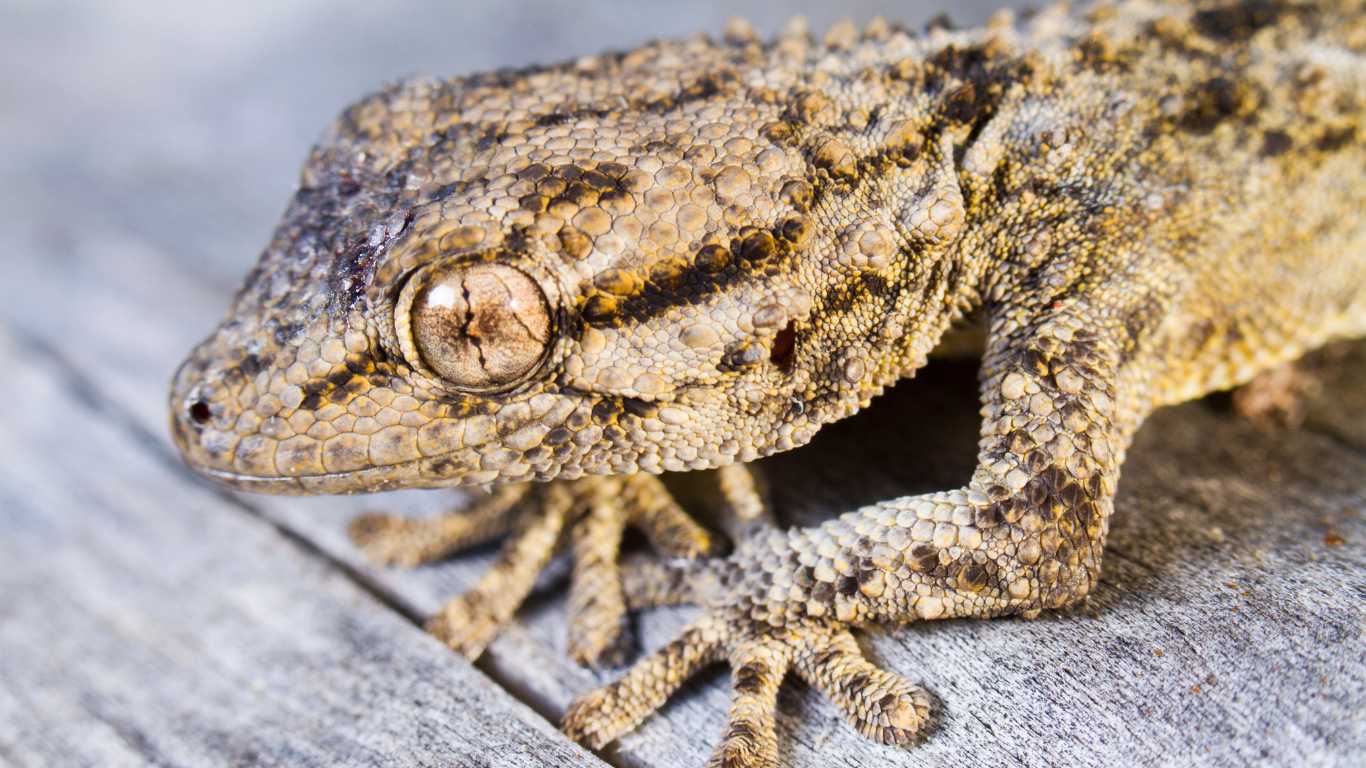
Crocodile Gecko as a Pet
Crocodile geckos can make wonderful pets for reptile enthusiasts who appreciate their unique behavior and striking appearance. While they may not be as interactive or social as some other pet reptiles, they have their own charm that can be intriguing to observe and appreciate.
To ensure the well-being of your crocodile gecko, it’s essential to understand their specific needs and provide them with a suitable habitat. By creating an environment that mimics their natural habitat, you can help them thrive and feel more at ease in their surroundings.
Although crocodile geckos are generally not aggressive, it’s important to handle them with care and minimize stress. While they may tolerate occasional handling, it’s essential to remember that these reptiles prefer a more hands-off approach and may prefer to be left undisturbed in their habitat.
Keep in mind that crocodile geckos have their own unique personality and behavior, which can vary from one individual to another. Some may be more curious and tolerant of handling, while others may be more shy or temperamental. It’s crucial to pay attention to your gecko’s cues and respect their preferences.
“Crocodile geckos can make fascinating pets for reptile enthusiasts who appreciate their unique behavior and appearance.”

Are Crocodile Geckos Good Pets?
Crocodile geckos can be great pets for reptile enthusiasts who have an understanding of their specific needs and are willing to provide a suitable habitat. They can offer a rewarding experience for those who are interested in observing their natural behavior and unique features. However, they may not be the best choice for individuals looking for a more interactive and social reptile companion.
Are Crocodile Geckos Aggressive?
Crocodile geckos are generally not aggressive towards humans. However, each gecko has its own personality and may display different levels of tolerance towards handling and interaction. It’s important to approach them with care and respect their boundaries to avoid causing stress or discomfort.
| Traits | Description |
|---|---|
| Temperament | Generally shy and prefer to hide during the day |
| Interaction | Not particularly interactive or social compared to other pet reptiles |
| Handling | Should be limited to minimize stress |
Join the Pet Planet Diaries
Sign up for our newsletter to get the latest tips, stories, and exclusive insights into the wonderful world of pets.
Final Remarks
Crocodile geckos are fascinating reptiles that make for unique and rewarding pets. To ensure their well-being, it is crucial to provide them with the proper care and attention they require. This includes creating a suitable habitat, offering a balanced diet, and maintaining the right temperature and humidity levels.
By meeting these specific needs and regularly monitoring their health, you can ensure that your crocodile gecko thrives and lives a happy life. Remember to seek guidance from reputable sources such as experienced reptile keepers or veterinarians to address any specific concerns or questions you may have regarding crocodile gecko care.
With the right knowledge and dedication, you can create a fulfilling bond with your crocodile gecko and enjoy observing their unique behavior and appearance. Providing a safe and comfortable environment will not only contribute to their overall well-being but also enhance your experience as a crocodile gecko owner. So, embrace the adventure of caring for these captivating reptiles and enjoy the companionship they bring.
FAQ
Can a crocodile gecko be kept as a pet?
Yes, crocodile geckos can be kept as pets. They are fascinating reptiles that require specific care and attention.
What is the natural habitat of crocodile geckos?
Crocodile geckos are native to rocky areas in the Mediterranean regions of Europe and Northern Africa.
How long do crocodile geckos live?
Crocodile geckos can live for up to 15 years in captivity with proper care.
How big do crocodile geckos get?
Crocodile geckos reach lengths of around 5.9 inches, including their tail.
What do crocodile geckos eat?
Crocodile geckos are insectivores and primarily eat crickets, moths, beetles, mealworms, and black soldier fly larvae.
How should I set up a tank for a crocodile gecko?
A suitable tank setup for a crocodile gecko requires proper temperature and humidity levels, hiding places, and a water bowl for hydration.
Where can I buy a crocodile gecko?
Crocodile geckos can be purchased from reputable breeders or at reptile expos and conventions like Repticon.
Are crocodile geckos aggressive?
Crocodile geckos are generally not aggressive, but they may not be as interactive compared to some other pet reptiles.
How do I take care of a crocodile gecko?
To take care of a crocodile gecko, provide a suitable tank setup, a proper diet, and monitor their health regularly. Consulting a reptile veterinarian is recommended for specific care concerns.
Are crocodile geckos good pets?
Crocodile geckos can make good pets for reptile enthusiasts who appreciate their unique behavior and appearance.

